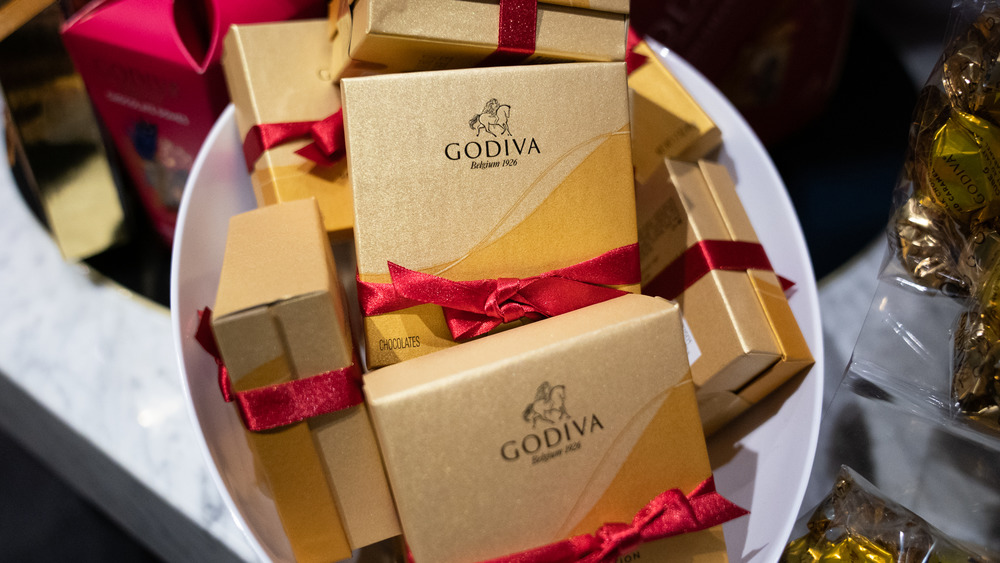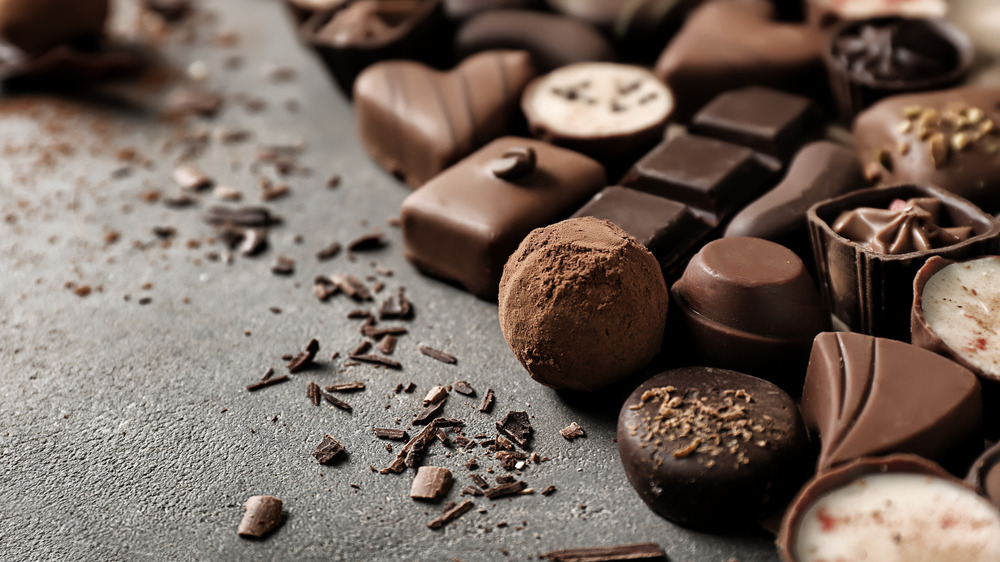How The Belgian Godiva Chocolates Are Different From Ones In The US
When reaching for a Godiva chocolate, you may not have noticed that, if you're in America, the chocolate was actually produced stateside — not in Belgium. The company, which began making confections over 75 years ago in Brussels, Belgium originally under the name Chocolaterie Draps, now has over 270 retail locations and an American-based factory, says Godiva's website. The U.S.-based Godiva plant is located in Reading, PA, and according to the site, it "produces the same amount of chocolate for the U.S. market as the Belgium plant produces for the rest of the world."
American-produced Godiva has gotten some heat for its packaging, even being sued for false-advertising claims. According to People, a man from Virginia sued the company in 2019, claiming that because the chocolate is now made in Reading, but the label still reads "Belgium 1926," a consumer could easily think the product was, in fact, produced in Belgium.
But is there a tastable, tangible difference between U.S. Godiva and the Belgium variety? Experts do admit they detect a difference in the flavor. Even Melanie Draps, the granddaughter of Godiva founder Pierre Draps, told The Washington Post, "I've tried the American Godivas and they do taste different." So what accounts for the difference?
U.S. regulations and consumer interests make the difference
The Washington Post notes that Godiva officials insist there is no discrepancy in the quality of ingredients used by both the Belgium and the U.S. factory. In fact, the luscious chocolate coating of all Godiva treats are identical, David Albright, the then-president of Godiva Worldwide told the Washington Post. There are, however, differences in what goes into the chocolates' fillings stateside.
For example, many states in America prohibit the use of alcohol in candy, so the liquor that flavors the fillings of the Belgium varieties has to be omitted. Base ingredients, like butter, sugar, and cream, can carry slight differences in America vs. Belgium, explains The Washington Post, but it's something else that Godiva credits for the flavor variance. "We tend to be led by the national palate of the country we're operating in to make modifications and minor changes," David Johnston, the then-general manager of Godiva's European operations, told The Washington Post. Meaning the reason behind a lot of the differences in taste is intentionally different flavors and varieties that the American chocolate-lovers are looking for in a treat.
So whether you are unwrapping chocolate made in Brussels or Reading, Godiva officials insist you're in for the same quality confection, even if it does carry a different flavor.

